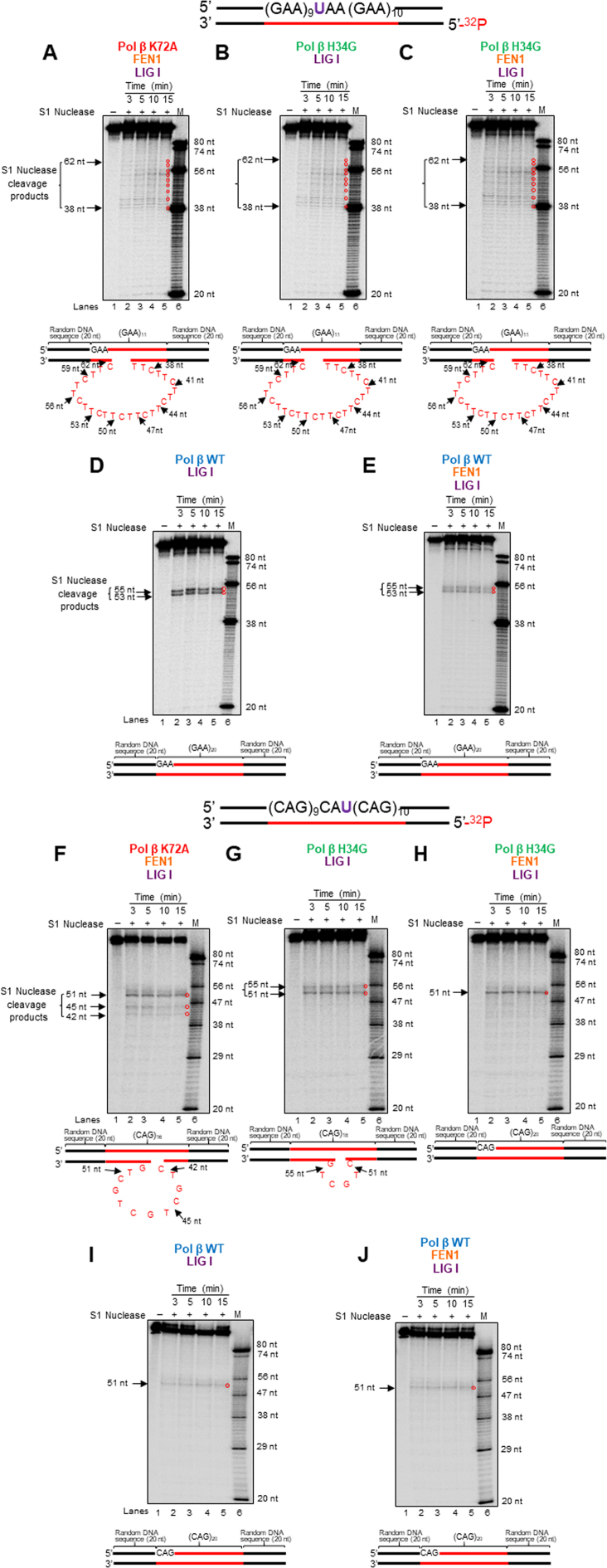Figure 5.
The formation of loop structures on the template strand of TNR tracts during BER of a native abasic site. The formation of loop structures on the template strand of the repaired products resulting from BER with the (GAA)20 and (CAG)20 repeat substrates containing a native abasic site was probed by S1 nuclease as described in the Materials and Methods. (A) and (F) The results of S1 nuclease cleavage on the template of the repaired products generated from pol β K72A-mediated BER in the presence of FEN1 with the (GAA)20 or (CAG)20 repeat substrate. (B) and (G) The results of S1 nuclease cleavage on the template of the repaired products generated from pol β H34G-mediated BER with the (GAA)20 or (CAG)20 repeat substrate. (C) and (H) The results of S1 nuclease cleavage on the template of the repaired products generated from pol β H34G-mediated BER in the presence of FEN1 with the (GAA)20 or (CAG)20 repeat substrate. (D) and (I) The results of S1 nuclease cleavage on the template of the repaired products generated from BER mediated by pol β WT with the (GAA)20 or (CAG)20 repeat substrate. (E) and (J) The results of S1 nuclease cleavage on the template of the repaired products generated from BER mediated by pol β WT in the presence of FEN1 with the (GAA)20 or (CAG)20 repeat substrate. Lane 1 represents substrate alone. Lanes 2–5 represent the S1 nuclease cleavage products generated at various time intervals. Lane 6 represents synthesized size markers (M). Substrates were 32P-labeled at the 5′-end of the template strand and are illustrated above each gel. S1 nuclease digestion sites are indicated. S1 nuclease cleavage sites and loop structures formed on the template strands of the repaired products are illustrated below the gels. Experiments were repeated in triplicate.

